Mold infestation in your Heating, Ventilation, and Air Conditioning (HVAC) system is a serious issue that can compromise air quality and pose potential health risks. Today, we will delve into the intricacies of HVAC mold removal, providing insights into the process and the crucial role of experts in ensuring your home remains mold-free.
Detecting mold within your HVAC system can pose a challenge, primarily because it tends to thrive in concealed spots like air ducts and vents. Nevertheless, there are telltale signs to be vigilant for.
One of the most apparent indicators is unusual odors. If a musty or moldy smell wafts from your air vents while your HVAC system is operational, it may be a clear sign of mold presence. Sometimes, you may spot visible mold growth. This could manifest around air vents, within ducts, or even on the ceiling in proximity to these areas.
Another important clue lies in allergic symptoms experienced by those inhabiting the space. If individuals start exhibiting allergy-like reactions such as sneezing, coughing, or itchy eyes when the HVAC system is running, it's a potential red flag that merits investigation.

Mold thrives in moist, dark environments, making HVAC air ducts an ideal breeding ground. Here are some reasons why mold may grow in your HVAC system:
Removing mold from HVAC air ducts requires professional techniques. At FDP Mold Remediation the process typically involves the following steps:
Hiring professionals for HVAC mold removal is crucial for several reasons. Their expertise and experience in handling complex HVAC systems, along with their knowledge of mold's hidden growth spots, ensure thorough and effective remediation. Safety is paramount, as mold can release harmful spores and mycotoxins, posing health risks when disturbed. FDP Mold Remediation specialists are trained to handle these hazards safely, protecting both themselves and building occupants. They also have access to specialized equipment, making the process more efficient.
Furthermore, professionals go beyond just removing visible mold; they address the root causes to prevent future infestations. Attempting HVAC mold removal on your own can be time-consuming and may not offer a lasting solution. In contrast, professionals work efficiently, saving you time and money while ensuring compliance with industry standards and regulations, ultimately providing a comprehensive and long-term resolution to the issue.
HVAC mold removal techniques encompass a systematic approach to eliminate mold growth within heating, ventilation, and air conditioning systems. The process begins with a comprehensive inspection and assessment to gauge the extent of mold contamination. Professionals use specialized tools to pinpoint areas of mold growth, often hidden within ducts and vents. Following this assessment, containment measures are implemented to prevent the dispersal of mold spores to other parts of the building. This typically involves sealing off affected ducts and vents to confine the mold.
To further ensure a safe and effective removal process, negative air pressure machines may be employed. These machines create controlled airflow, directing any released mold spores to filtration systems, thus preventing their release into the surrounding environment. Subsequently, the actual removal of mold from the HVAC system takes place, often involving thorough cleaning of ducts and vents. Finally, preventive measures are implemented to address the root causes of mold growth, helping to deter future infestations and ensure a long-term solution. This comprehensive approach is crucial for maintaining a clean and safe HVAC system.
Preventing mold from resurfacing after its removal is an essential task that involves maintaining a dry and well-ventilated environment. Mold thrives in damp conditions, so it is important to control the moisture and humidity levels in your home. Ensuring that your home is well-ventilated can help reduce moisture and deter mold growth, especially in high-moisture areas like bathrooms and kitchens. Regular maintenance and inspections, coupled with swift repairs, are also key in preventing mold problems. This includes timely detection and repair of leaks, regular cleaning of gutters, and directing rainwater away from your house to manage moisture levels. Lastly, scheduling regular professional inspections can help detect early signs of mold, enabling prompt remediation before the mold spreads.
Dealing with mold in your HVAC system is a task best left to the professionals at FDP Mold Remediation. Our experience, skills, and specialized equipment ensure a safe and thorough HVAC mold treatment process. If you suspect a mold problem in your HVAC system, do not hesitate to contact our professional mold remediation service.
Call us today for a comprehensive HVAC mold inspection and ensure a healthier, mold-free environment in your home or office.



